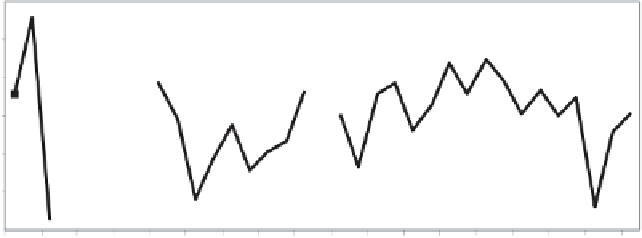Geoscience Reference
In-Depth Information
and semiarid areas of Rajasthan. It was found that 78% of the livestock
migrated from the Barmer district followed by 70% from the Jaisalmer and
20% from the Jodhpur district.
7. Scenario of Drought in Baran District
In 34 years, the rainfall in Baran significantly varied with a low of 26 mm
to as high as 131 mm (Fig. 2). On the other hand, there was not much sig-
nificant variation in temperature. The inhabitants of Baran are engaged in
agricultural activities (producing crops like wheat, pulses, maize, sugarcane
amongst others), growing livestock, and industries. There are a total of 119
agricultural based industries.
5
Livestock contribute more than 50% of the
GDP in these areas (Table 3).
Rainfall in Baran (1970-2004)
140
131
120
109.2
107.9
98.4
100
97.4
97
92.9
92
91
89.9
91.3
91.6
85.6
72.3
80.5
80
80
78
75
80.6
80.1
67
71.5
60
57
61
53
51
40
36
26
32.2
20
1970
1973
1976
1979
1982
1985
1988
1991
1994
1997
2000
2003
Years
Rainfall in Baran district (1970-2004).
15
,
16
Fig. 2.
Table 3.
Livestock in Baran district.
Types
Numbers
Cattle
420685
Buffaloes
103513
Sheep
16041
Goats
125962
Camels
2881
Pigs
5432
Horses and ponies
3474
Mules and donkey
2387
Source
:Ref.6.








































